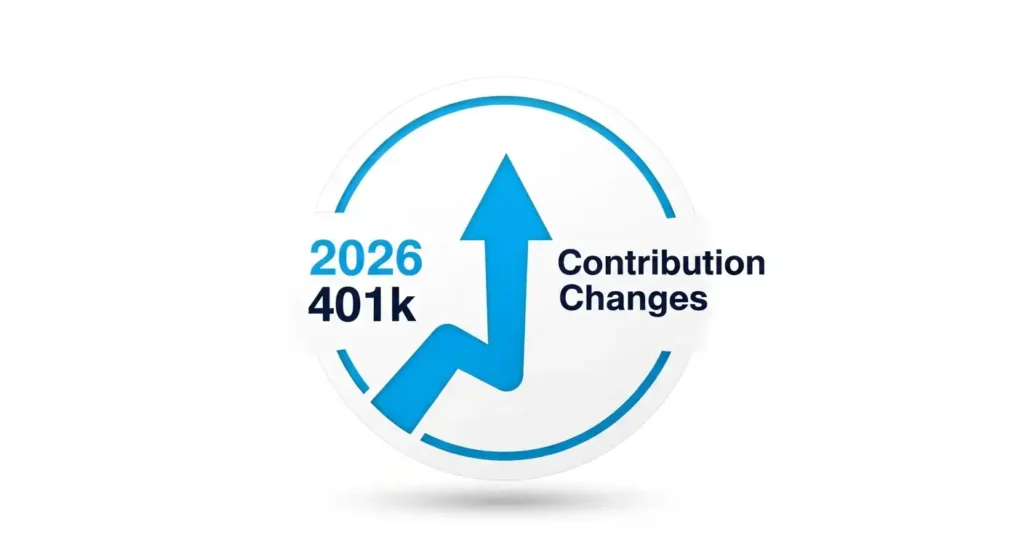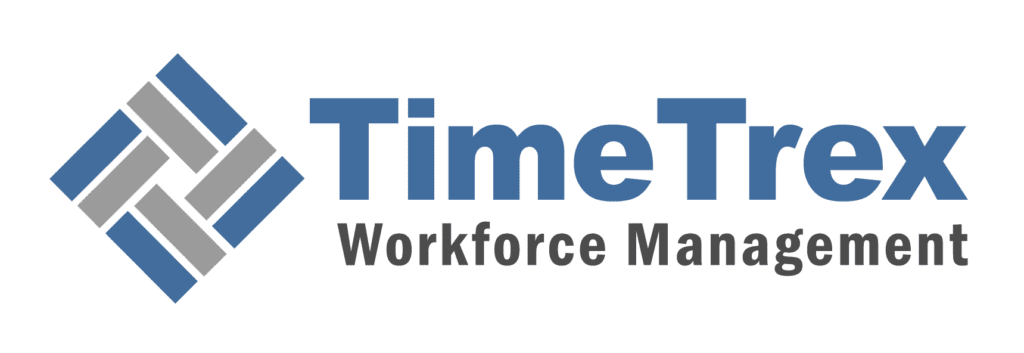
Projected 2026 401k Contribution Changes & Strategic Analysis
This comprehensive guide analyzes the projected 2026 401k contribution changes, offering a strategic analysis of retirement plan limits for 401(k)s, IRAs, and HSAs. Understanding these key adjustments, including the significant impact of the SECURE 2.0 Act, is crucial for maximizing your retirement savings. We'll explore the expected increases in employee deferral limits, catch-up contributions, and the new mandatory Roth treatment for high earners, providing a forward-looking roadmap for 2026.
TL;DR: Key Projected Adjustments to Retirement Plan Limits for 2026
Based on inflation forecasts, the 2026 tax year is set for notable increases in retirement plan contribution limits. The employee 401(k) deferral limit is expected to rise by $1,000 to $24,500. The overall defined contribution limit, combining employee and employer inputs, is projected to increase by $2,000 to $72,000. A major change from the SECURE 2.0 Act will take effect: high-income earners (projected above $150,000 in prior-year wages) must make all catch-up contributions on a Roth (after-tax) basis. This analysis covers the full spectrum of tax-advantaged accounts, providing strategic recommendations for navigating the evolving retirement savings environment of 2026.
Employee Contribution
$24,500
Up from $23,500 in 2025.
Age 50+ Catch-Up
$8,000
Up from $7,500 in 2025.
Overall Limit
$72,000
Up from $70,000 (Employee + Employer).
Article Index
- In-Depth Analysis of Projected 2026 401(k) Contribution Limits
- The Regulatory Landscape: SECURE 2.0 Act's Impact on 2026 Contributions
- A Holistic View of the 2026 Tax-Advantaged Savings Ecosystem
- Critical Income and Compensation Thresholds for Strategic Planning
- Strategic Implications and Forward-Looking Recommendations
In-Depth Analysis of Projected 2026 401(k) Contribution Limits
Effective retirement planning is built on understanding the annual contribution limits set by the Internal Revenue Service (IRS). These limits are adjusted for cost-of-living to prevent erosion by inflation. Below is a detailed analysis of the projected 2026 limits for the 401(k) contribution structure, compared to the official limits for 2024 and 2025.
The Employee Elective Deferral Limit (§402(g)): Projecting the Path to $24,500
The primary limit on an employee's personal 401(k) contributions is the elective deferral limit. For the 2026 tax year, industry forecasters project a $1,000 increase, bringing the maximum contribution to $24,500 for participants under 50. This continues a steady upward trend, following limits of $23,000 in 2024 and $23,500 in 2025. This individual cap applies across all 401(k), 403(b), or governmental 457 plans an individual may have. While a $1,000 annual increase seems modest, its cumulative effect is substantial, potentially adding a six-figure sum to a retirement portfolio over a 30-year career.
The Upward Trend: A Decade of Growth
401(k) contribution limits have consistently risen, enabling savers to set aside more. This chart illustrates the steady climb of the maximum employee contribution, reflecting long-term economic growth and inflation.
Standard Catch-Up Contributions (Age 50+): A Modest but Meaningful Increase
For participants aged 50 or older, the tax code permits "catch-up" contributions to accelerate savings. For 2026, the standard catch-up is projected to increase by $500, rising to $8,000 from its $7,500 level in 2024 and 2025. This adjustment maintains the provision's real-dollar value. Combined with the base deferral, participants aged 50 and over will be able to contribute a total of $32,500 ($24,500 base + $8,000 catch-up) from their salary in 2026.
The SECURE 2.0 "Super Catch-Up" (Ages 60-63): Analyzing Divergent Industry Forecasts
Beginning in 2025, a provision from the SECURE 2.0 Act creates an enhanced catch-up for individuals aged 60-63. For 2026, forecasts for this limit vary due to a complex legislative formula. The official 2025 limit is $11,250. Projections for 2026 range from remaining at $11,250 to increasing to $12,000. The $12,000 figure aligns with 150% of the projected $8,000 regular catch-up. Until the IRS issues official guidance, planners should be prepared for multiple scenarios. Assuming the $12,000 projection holds, the total employee contribution for this age group would be $36,500 in 2026.
The Overall Defined Contribution Limit (§415(c)): Approaching the $72,000 Threshold
IRC §415(c) caps the total annual additions to an account from all sources for a single employer, including employee and employer contributions. For 2026, this aggregate limit is projected to increase by $2,000 to $72,000. Importantly, catch-up contributions do not count against this limit. This increase is particularly significant for high-income employees and self-employed individuals using Solo 401(k) plans, as it expands their capacity for tax-advantaged savings and enables advanced strategies like "Mega Backdoor Roth" conversions.
| Contribution Type | 2024 (Official) | 2025 (Official) | 2026 (Projected) |
|---|---|---|---|
| Employee Elective Deferral Limit (§402(g)) (Under 50) | $23,000 | $23,500 | $24,500 |
| Standard Catch-Up Contribution (Ages 50-59 & 64+) | $7,500 | $7,500 | $8,000 |
| Total Employee Contribution (Ages 50-59 & 64+) | $30,500 | $31,000 | $32,500 |
| "Super Catch-Up" Contribution (Ages 60-63) | N/A | $11,250 | $11,250 - $12,000 |
| Total Employee Contribution (Ages 60-63) | N/A | $34,750 | $35,750 - $36,500 |
| Overall DC Limit (§415(c)) (Employee + Employer) | $69,000 | $70,000 | $72,000 |
| Total Potential In-Plan Allocation (Ages 50-59 & 64+) | $76,500 | $77,500 | $80,000 |
| Total Potential In-Plan Allocation (Ages 60-63) | N/A | $81,250 | $83,250 - $84,000 |
The Regulatory Landscape: SECURE 2.0 Act's Impact on 2026 Contributions
Beyond inflation adjustments, 2026 marks the start of a major SECURE 2.0 Act provision: mandatory Roth treatment for catch-up contributions made by high-income participants. This rule has profound operational and strategic consequences.
The Roth Mandate: A Paradigm Shift for High-Earner Catch-Up Contributions
Starting January 1, 2026, any catch-up contributions by a participant whose prior-year FICA wages exceeded an indexed threshold (projected at $150,000 for 2026 determination) must be designated as Roth (after-tax) contributions. This policy shift forces a portion of high-earner savings into an after-tax framework, accelerating tax revenue for the government. It eliminates an immediate tax deduction for these savers but provides for tax-free withdrawals in retirement.
Operational and Strategic Implications for Plan Sponsors and Participants
For plan sponsors, this mandate requires significant administrative preparation. Any 401(k) plan must offer a Roth contribution feature if it wants to allow high-earning participants to make any catch-up contributions. Failure to do so will bar these employees from making catch-ups entirely. Payroll systems must be reconfigured to identify eligible employees and direct their catch-up funds to a Roth source. For affected participants, this means losing a key tax-deduction strategy. This may inadvertently accelerate the universal adoption of Roth 401(k) options for all employees, as sponsors add the feature to remain competitive.
Understanding the Indexed Wage Threshold
The wage threshold for this rule is projected to be $150,000 based on 2025 FICA wages. It's crucial to distinguish this from the "Highly Compensated Employee" (HCE) threshold, projected at $160,000 for the 2026 look-back year. This creates a new employee cohort—those earning between $150,000 and $160,000—who are subject to the Roth mandate but are not considered HCEs for nondiscrimination testing, adding a new layer of administrative complexity.
A Holistic View of the 2026 Tax-Advantaged Savings Ecosystem
A comprehensive financial strategy must consider the entire ecosystem of tax-advantaged accounts. This section covers projected 2026 limits for IRAs, HSAs, and other retirement plans.
Individual Retirement Arrangements (Traditional & Roth IRAs): Contribution and Income Limits
The base contribution limit for Traditional and Roth IRAs is projected to rise by $500 to $7,500 in 2026. The catch-up contribution for those 50 and over is expected to increase to $1,100, bringing their total potential contribution to $8,600. This increase enhances the power of the "Backdoor Roth IRA" strategy for high-income earners phased out of direct Roth contributions.
Health Savings Accounts (HSAs) and Flexible Spending Accounts (FSAs)
HSAs offer a unique triple-tax advantage. For 2026, HSA limits are projected to rise to $4,400 for self-only coverage and $8,750 for family coverage. The catch-up for those 55+ remains $1,000. For high earners facing the new Roth 401(k) mandate, maximizing HSA contributions becomes a key strategy to retain a valuable tax deduction.
Retirement Plans for Small Businesses and the Self-Employed (SEP-IRA, SIMPLE IRA, Solo 401(k))
Limit adjustments also impact business owners. The SEP-IRA limit is tied to the §415(c) limit and is projected at $72,000. The SIMPLE IRA employee limit is expected to be $17,000. The Solo 401(k) continues to be a superior vehicle for many sole proprietors, benefiting from increases to both the employee and employer contribution components, solidifying its advantage over the simpler SEP-IRA for maximizing savings.
| Account Type | 2026 Projected Limit (Under 50) | 2026 Projected Catch-Up | 2026 Projected Total (With Catch-Up) |
|---|---|---|---|
| 401(k) / 403(b) / 457 | $24,500 | $8,000 (Age 50+) | $32,500 |
| 401(k) / 403(b) (Ages 60-63) | $24,500 | $11,250 - $12,000 | $35,750 - $36,500 |
| Traditional / Roth IRA | $7,500 | $1,100 (Age 50+) | $8,600 |
| HSA (Self-Only) | $4,400 | $1,000 (Age 55+) | $5,400 |
| HSA (Family) | $8,750 | $1,000 (Age 55+) | $9,750 |
| SIMPLE IRA | $17,000 | $3,500 (Age 50+) | $20,500 |
| SEP-IRA | $72,000 | N/A | $72,000 |
| Overall DC Plan Limit (§415(c)) | $72,000 | N/A (Catch-up is separate) | $72,000 + Catch-Up |
Critical Income and Compensation Thresholds for Strategic Planning
Beyond direct contribution limits, several other indexed thresholds are crucial for retirement planning. For 2026, the Annual Compensation Limit used for calculating contributions is projected to increase to $360,000. The Highly Compensated Employee (HCE) threshold is expected to be $160,000 for the 2026 look-back year. Additionally, the Modified Adjusted Gross Income (MAGI) phase-out ranges that determine eligibility for deductible Traditional IRA and direct Roth IRA contributions are also projected to rise, providing more room for savers.
Strategic Implications and Forward-Looking Recommendations
The projected 2026 limits and regulatory changes require proactive planning. Higher limits mean greater opportunity. Following a simple strategy can help ensure you're taking full advantage of your 401(k) plan. The following recommendations are tailored to key groups to help navigate this evolving landscape.
Step 1: Get the Match
Contribute at least enough to get the full company match. It's free money!
Step 2: Automate & Increase
Set your contribution percentage and enable auto-increases annually.
Step 3: Aim for Max
Calculate the percentage needed to hit $24,500 and adjust if possible.
Step 4: Use Catch-Up
If age 50+, contribute an extra $8,000 to accelerate savings.
For High-Income Earners
With the new mandatory Roth treatment of catch-up contributions, high earners should focus on maximizing pre-tax deferrals up to the standard limit ($24,500). To compensate for the lost tax deduction, prioritize maximizing contributions to a Health Savings Account (HSA) and utilizing the Backdoor Roth IRA strategy, which becomes even more valuable with the increased IRA limits.
For Participants Aged 60-63
This group has a unique window to use the enhanced "super catch-up." Plan for the uncertainty in the 2026 limit ($11,250 to $12,000) by budgeting conservatively and being prepared to increase deferrals late in the year. If subject to the high-income threshold, be aware that this entire amount must be contributed on a Roth basis.
For Business Owners and the Self-Employed
The 2026 limit increases make it an ideal time to re-evaluate your retirement plan. The widening contribution gap solidifies the Solo 401(k) as the superior choice over a SEP-IRA for many. If you have employees, prepare your plan and payroll systems now for the mandatory Roth catch-up rule to ensure compliance.
For Plan Administrators and Sponsors
Proactive preparation is essential. Consult with legal counsel to amend plan documents for the new SECURE 2.0 provisions. Audit payroll systems to ensure they can handle the new wage thresholds and contribution logic. Most importantly, develop a clear communication strategy to educate all participants about these complex changes to help them make informed decisions.
Plan Your 2026 Contributions Today
Are you on track to maximize your retirement savings? Use our powerful calculator to model different contribution scenarios and see how the 2026 changes could impact your long-term goals.
Use the 401(k) Savings CalculatorDisclaimer: The content provided on this webpage is for informational purposes only and is not intended to be a substitute for professional advice. While we strive to ensure the accuracy and timeliness of the information presented here, the details may change over time or vary in different jurisdictions. Therefore, we do not guarantee the completeness, reliability, or absolute accuracy of this information. The information on this page should not be used as a basis for making legal, financial, or any other key decisions. We strongly advise consulting with a qualified professional or expert in the relevant field for specific advice, guidance, or services. By using this webpage, you acknowledge that the information is offered “as is” and that we are not liable for any errors, omissions, or inaccuracies in the content, nor for any actions taken based on the information provided. We shall not be held liable for any direct, indirect, incidental, consequential, or punitive damages arising out of your access to, use of, or reliance on any content on this page.
About The Author

Roger Wood
With a Baccalaureate of Science and advanced studies in business, Roger has successfully managed businesses across five continents. His extensive global experience and strategic insights contribute significantly to the success of TimeTrex. His expertise and dedication ensure we deliver top-notch solutions to our clients around the world.
Time To Clock-In
Start your 30-day free trial!
Experience the Ultimate Workforce Solution and Revolutionize Your Business Today
- Eliminate Errors
- Simple & Easy To Use
- Real-time Reporting

Saving businesses time and money through better workforce management since 2003.
Copyright © 2025 TimeTrex. All Rights Reserved.
